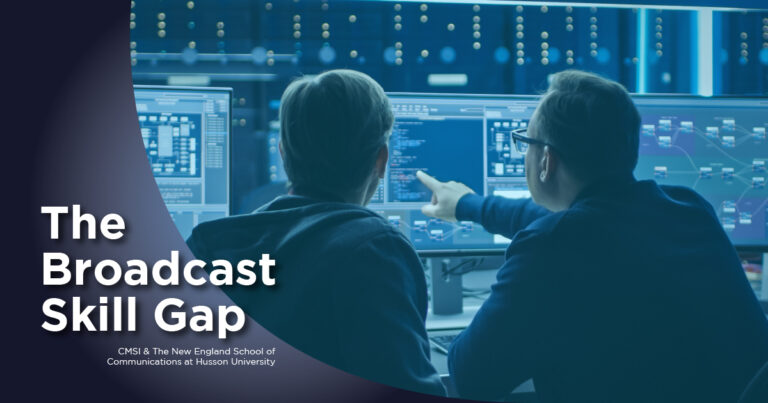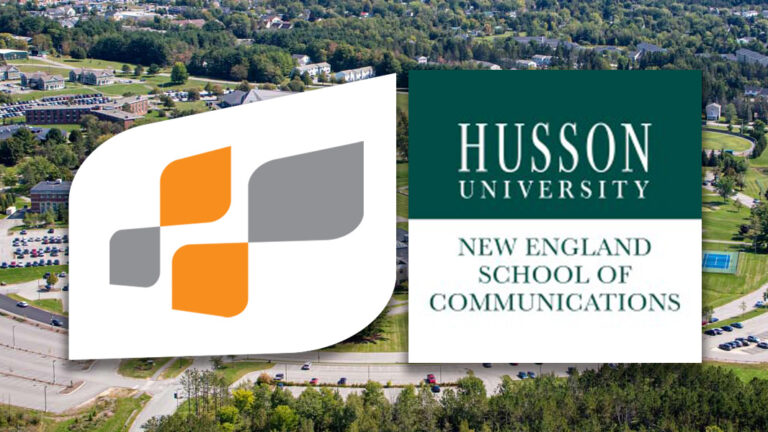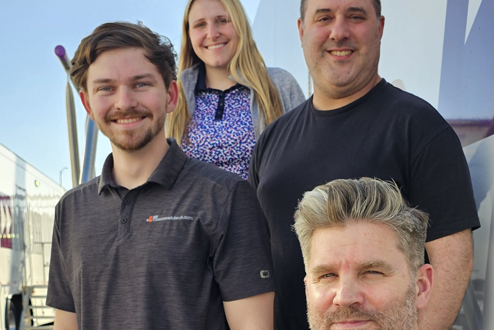There’s a growing challenge in the world of live production: as workflows go remote and technology evolves, the industry is facing a major talent gap—especially in audio and network engineering. By using their combined powers of live professional experience and enthusiastic collegiate eagerness, CMSI and NESCom are bridging that gap together.
During a recent softball broadcast produced by NESCom students using CMSI’s RPOC platform, it became clear that today’s students are uniquely equipped to take on the changing demands of the industry. The remote production setup, which included CMSI’s hardware, Simplylive, and Solid State Logic, mirrored the workflows used in high-stakes professional broadcasts like the NBA Playoffs. And while the environment was intense, the students didn’t find the tech intimidating at all.
Bridging the Broadcast Skill Gap With Confidence and Tech Fluency
“Give these students a desktop computer, then hand them a tablet and tell them to do the same task—they won’t flinch,” said Ryan Carignan, CMSI’s Director of Innovation. “Switch a mouse for a touchpad, a keyboard for a touchscreen—they’re comfortable either way. The ability to adapt to new tools so quickly is why they’re going to thrive in this next generation of broadcasting.”
This adaptability is crucial, because virtualized tools and cloud-based workflows are replacing the traditional hardware-heavy model of broadcasting. Students who are comfortable working across devices and platforms can get up to speed faster and deliver professional-level results in less time. That’s good for their career prospects—and even better for an industry starved for talent.
The Broadcast Skill Gap’s Missing Link: The “Third Guy”
But there’s a specific skill gap that needs attention. While traditional audio mixing setups often involve both onsite and studio based engineering, there’s a critical “third” role that’s often missing: someone who can bridge the gap between the onsite crew and the remote operator. This person needs to speak both languages—audio and IT.
“That hybrid skillset is in huge demand,” Carignan said. “The industry doesn’t just need great audio engineers. It needs people who understand IP-based workflows, network routing, and cloud infrastructure—people who can talk to both the creative and infrastructure side of Audio Production.”
CMSI’s partnership with NESCom helps students develop exactly that kind of hybrid fluency. By working in a real-world REMI setup, students gain not only hands-on experience but also the context to understand how all the moving pieces fit together—from signal flow to control surfaces to cloud-based contribution. And because they’re learning in an environment that mimics the most current production practices, they’re hitting the ground running.
“Any production skill paired with cloud and network engineering is what the industry is begging for,” Carignan said. “And thanks to this partnership, NESCom students are already ahead of the curve.”
At this time of the year, thousands of recent graduates will be entering the professional workforce for the very first time. While some will struggle, and most will worry, NESCom grads have a leg up on the competition and typically find employment in the industry within six months of finishing college. It’s a win for the students, a win for Husson University, a win for CMSI, and a massive sigh of relief for the live production industry at large. And in the world of live production, sighs of relief are even more rare than the third guy that inspires them.












